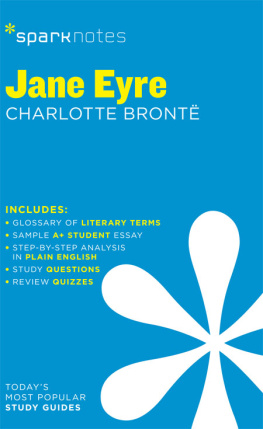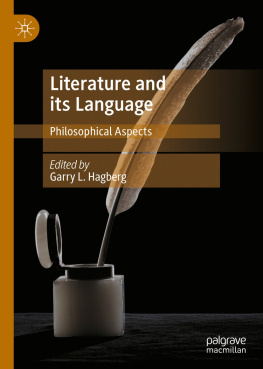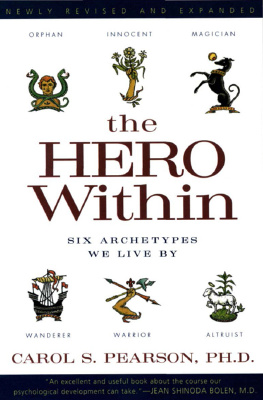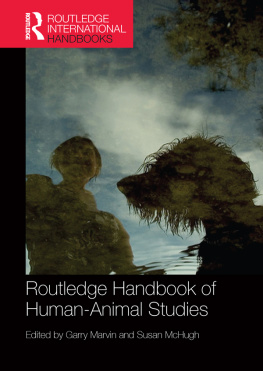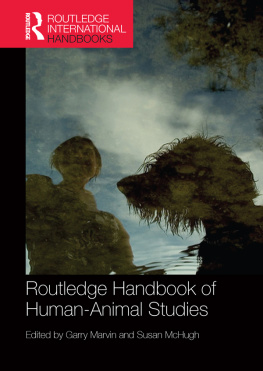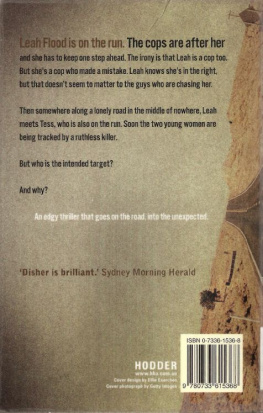Garry Jane - Archetypes and Motifs in Folklore and Literature: A Handbook
Here you can read online Garry Jane - Archetypes and Motifs in Folklore and Literature: A Handbook full text of the book (entire story) in english for free. Download pdf and epub, get meaning, cover and reviews about this ebook. publisher: Taylor and Francis, genre: Art. Description of the work, (preface) as well as reviews are available. Best literature library LitArk.com created for fans of good reading and offers a wide selection of genres:
Romance novel
Science fiction
Adventure
Detective
Science
History
Home and family
Prose
Art
Politics
Computer
Non-fiction
Religion
Business
Children
Humor
Choose a favorite category and find really read worthwhile books. Enjoy immersion in the world of imagination, feel the emotions of the characters or learn something new for yourself, make an fascinating discovery.
- Book:Archetypes and Motifs in Folklore and Literature: A Handbook
- Author:
- Publisher:Taylor and Francis
- Genre:
- Rating:5 / 5
- Favourites:Add to favourites
- Your mark:
- 100
- 1
- 2
- 3
- 4
- 5
Archetypes and Motifs in Folklore and Literature: A Handbook: summary, description and annotation
We offer to read an annotation, description, summary or preface (depends on what the author of the book "Archetypes and Motifs in Folklore and Literature: A Handbook" wrote himself). If you haven't found the necessary information about the book — write in the comments, we will try to find it.
Garry Jane: author's other books
Who wrote Archetypes and Motifs in Folklore and Literature: A Handbook? Find out the surname, the name of the author of the book and a list of all author's works by series.
Archetypes and Motifs in Folklore and Literature: A Handbook — read online for free the complete book (whole text) full work
Below is the text of the book, divided by pages. System saving the place of the last page read, allows you to conveniently read the book "Archetypes and Motifs in Folklore and Literature: A Handbook" online for free, without having to search again every time where you left off. Put a bookmark, and you can go to the page where you finished reading at any time.
Font size:
Interval:
Bookmark:
The double, at its most basic, is a duplicate of an individual or a part of a divided individual. Numerous versions of this complicated archetypal figure are found in dreams, mythologies, rituals of primitive peoples, ancient and medieval alchemists narratives, folklore, and literature (including drama, poetry, stories and novels, and the scripts of radio, television, and film). A.E. Crawley suggests that the sources of the double, as a term, are the mathematical ideas of multiplication and division, the main connotation of the term being the doppelgnger (the double-goer), visible or invisible, material or spiritual (1920, 853). The double-goer is variously designated: the Other, the alter ego, and the second self, among other names.
The source of the double as a phenomenon of duplication may be the twin-cult, versions of which were discovered by anthropologists in primitive cultures in Africa, Asia, Europe, and the Americas, according to James Rendel Harris. Probably based on superstitious fears regarding the births of twins, the twin myth apparently evolved into the twin figures of mythology. For example, Romulus and Remus, their mother killed, are set adrift in a hollow oak trunk on the Tiber and saved, eventually, by a wolf and a woodpecker; eighteen twins sail aboard the Argo from Thessaly to Colchis, seeking the Golden Fleece; Jason, the captain of the Argo, is himself one of the twins, although his brother Triptolemus has remained ashore to farm the land. The stages in the evolution of the twin tabus were as follows: (1) the mother and the twins were killed; (2) one twin was killed; (3) the mother and the twins were banished to a twin-town; and (4) the twins were revered as children of the sky god of thunder and/or lightningas benefactors, protectors, builders (Harris 1913, xxiii-xxiv, 226, 229, 412).
The second stage of the twin tabu may have evolved into the concept of the mortal/immortal pairs (Harris 1913, 217). For example, it might have been eventually decided that one of the twins had been fathered by a human, the other by a god, a decision that may have generated those pairs in mythology that include one twin (or brother, or friend) who lives or succeeds, while the other dies or disappears. In the Thousand and One Nights, the evil Qasim and the good Ali Baba are brothers. Qasim learns from his brother about the cavern of riches, goes there, and is murdered by the forty thieves. Ali Baba survives, a wealthy man, into old age. In the Sumerian epic of Gilgamesh, when the primitive Enkidu dies, the civilized Gilgamesh, feeling that a part of him has died with Enkidu, sets out to seek immortality. As the animal is lost, the search for the angel begins; as the material body loses its power, the search for a spiritual self intensifies.
The source of the double as a concept of division is located by Freud in the idea of an immortal soul, an idea rising, according to Freud, from infantile narcissism or primitive superstition. When some impression revives in the psyches of civilized adults those infantile complexes or primitive beliefs, the double no longer appears to be an assurance of immortality, but rather appears as an uncanny harbinger of death (The Uncanny). Freud notwithstanding, peoples around the world believe that the soul is an invisible duplicate of each individuals body, constitutes the life of that body, is separated from that body at death, and afterward becomes visible only on rare occasions, when it is called a ghost. This almost universal belief is found in all primitive societies and all ancient cultures. For example, in the Egypt of antiquity, the soul, the ka, was conceived of as a miniature duplicate of the person whose soul it was.
The source of the double as a concept of division was located, by Carl Jung, much further back than the infantile or primitive. Jung placed that source at the lowest depths of the collective unconscious, the level of the instinctualor, even deeper, at that level where the World is chemical substances. The psyche is, simply, the World (Jung 1959a, 21-22, 173). Consciousness, Jung claimed, is a recent acquisition and is therefore menaced by various dangers, one danger being a dissociation of consciousness, or a splitting in the psyche, which results in a loss of identity (Jung 1964, 6-7). Many primitive societies regarded an individuals shadow, reflection (as in water), or portrait as the individuals soul, or at least a vital part of the individual, that must be carefully protected (Frazer 1981, 141, 148). Divisibility of personality is suggested throughout Jungs writings on archetypes, primordial types, universal images, patterns of instinctual behavior, which we project into the external world (Jung 1959a, 5, 44, 59).
Numerous archetypes exist, but it is the shadow, and the anima or animus, that have the most frequent and the most disturbing influence on the ego, and the most accessible of these, and the easiest to experience, is the shadow, for its nature can in large measure be inferred from the contents of the personal unconsciousfrom a dream, for instance (Jung 1959b, 8). The shadow is a sort of second personality to the primary or ego personality (Jung 1959a, 262). Odin and Loki, at the beginning of time, exchange vows of friendship, becoming blood brothers, but Loki grows malicious, ultimately bringing on the twilight of the gods, in which Odin, and Loki himself, are destroyed. In Mary Shelleys Frankenstein, or The Modern Prometheus (1818), the creature murders the brother, best friend, and bride of his creator, Dr. Frankenstein, who also dies, as does the monster himself. In the film King Kong (1933), a gigantic gorilla threatens human accomplishment, symbolized by the Empire State Building; the monster climbs the building, is shot dead by men in airplanes, and falls to the street below. The shadow can be positive, as well as negative. An animal in a fairy tale represents a shadow self, but the animal may help the hero or heroine in some essential way.
Another important doubling by division in mythology and literature is that of the male/female pair Jung called the divine syzygythe god and goddess of mythology, like Apollo the sun god and his twin, Artemis the moon goddess. Or the king and queen in alchemists symbolic descriptions of the opus: the king descends into the waters and is there wed to the queen; the two die, and an androgynous child ascends from their death. Jung related the divine pair to the anima and animus archetypes, the double configuration evolving into the modem concept of male consciousness and the female unconscious (Jung 1959a, 59, 173, 175-76). Jung adds two archetypes to the divine couple, Wise Old Man and Chthonic Mother, to form a quaternion, a scheme of the self (Jung 1959b, 21-22, 242). This configuration, applied to narratives, is often a familial one in which four characters are paternal, maternal, fraternal, and sororal types. King Cepheus is helpless when Queen Cassiopeia offends Poseidon, who sends a monster to harass the country. Cepheuss daughter Andromeda is offered as a sacrifice to the monster, but Perseus arrives, slays the monster, and marries Andromeda.
A quaternion may comprise two pairs of male/female couples, a higher and a lower. Jung discusses a Grimm tale in which a hero and a princess are riding horses. Jung interprets the animals as the shadow selves, the lower selves, of the royal pair. At the end of the tale, the horses are transformed into a second hero and a second princess (Jung 1959a, 243-254). In Nathaniel Hawthornes novel The Marble Faun (1860), two American art students in Rome, Kenyon and Hilda, meet Donatello, an innocent with a wild, forest nature, and Miriam, a mysterious dark lady. Miriam is being stalked and harassed by a man who is likened to a reptile; Donatello kills the man, with Miriams approval. Donatellos moral sense is bom, he has committed a sin and feels remorse, he has become human. He willingly enters a dungeon in a sepulchral fortress to pay for his crime. Miriam is seen by Kenyon and Hilda at a distance, lifting her hands toward them in a blessing and farewell, before disappearing.
Font size:
Interval:
Bookmark:
Similar books «Archetypes and Motifs in Folklore and Literature: A Handbook»
Look at similar books to Archetypes and Motifs in Folklore and Literature: A Handbook. We have selected literature similar in name and meaning in the hope of providing readers with more options to find new, interesting, not yet read works.
Discussion, reviews of the book Archetypes and Motifs in Folklore and Literature: A Handbook and just readers' own opinions. Leave your comments, write what you think about the work, its meaning or the main characters. Specify what exactly you liked and what you didn't like, and why you think so.


